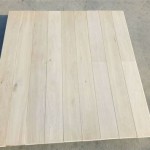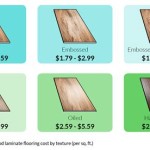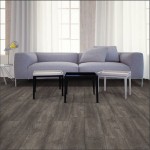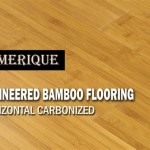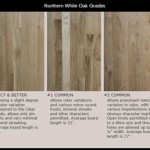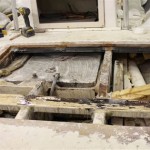Types of Non-Resilient Flooring
Non-resilient flooring is a type of flooring that is not easily deformed or compressed under pressure. It is typically made from hard materials such as ceramic, stone, or concrete. Non-resilient flooring is often used in commercial and industrial settings, as well as in homes.
There are many different types of non-resilient flooring, each with its own unique advantages and disadvantages. Some of the most common types of non-resilient flooring include:
- Ceramic tile is a type of non-resilient flooring that is made from fired clay. It is available in a wide variety of colors, patterns, and textures, and is a popular choice for kitchens, bathrooms, and other areas where durability is important.
- Stone tile is another type of non-resilient flooring that is made from natural stone. It is available in a variety of colors and textures, and is a popular choice for patios, decks, and other outdoor areas.
- Concrete flooring is a type of non-resilient flooring that is made from cement, sand, and gravel. It is available in a variety of colors and textures, and is a popular choice for warehouses, garages, and other industrial settings.
- Vinyl composition tile (VCT) is a type of non-resilient flooring that is made from vinyl and limestone. It is available in a wide variety of colors and patterns, and is a popular choice for schools, hospitals, and other commercial settings.
- Rubber flooring is a type of non-resilient flooring that is made from recycled rubber. It is available in a variety of colors and textures, and is a popular choice for gyms, fitness centers, and other areas where comfort and durability are important.
When choosing a type of non-resilient flooring, it is important to consider the specific needs of the area where it will be installed. Factors to consider include:
- Durability: The durability of non-resilient flooring is determined by its ability to withstand wear and tear. Ceramic tile and stone tile are the most durable types of non-resilient flooring, while rubber flooring is the least durable.
- Water resistance: Non-resilient flooring that is water resistant is ideal for areas where there is a risk of moisture, such as kitchens, bathrooms, and basements. Ceramic tile, stone tile, and concrete flooring are all water resistant.
- Slip resistance: Non-resilient flooring that is slip resistant is ideal for areas where there is a risk of slipping, such as bathrooms, kitchens, and outdoor areas. Rubber flooring and VCT are both slip resistant.
- Comfort: The comfort of non-resilient flooring is determined by its ability to absorb impact. Rubber flooring and vinyl composition tile are the most comfortable types of non-resilient flooring, while ceramic tile and stone tile are the least comfortable.
- Cost: The cost of non-resilient flooring varies depending on the type of material used and the size of the area where it will be installed. Ceramic tile and stone tile are typically the most expensive types of non-resilient flooring, while rubber flooring and VCT are typically the least expensive.
By considering the factors listed above, you can choose the type of non-resilient flooring that is best for your specific needs and budget.

Types Of Resilient Flooring Floor Guide Precision

Resilient Flooring Vs Non Cfic

The 7 Types Of Resilient Flooring Floor Trends Installation

The 7 Types Of Resilient Flooring Floor Trends Installation

Resilient Flooring Types Of Used In Buildings

Types Of Resilient Flooring Floor Guide Precision

Resilient Flooring Vs Non Cfic

Types Of Resilient Flooring Floor Guide Precision

What Is Resilient Flooring

Webinar Types Of Non Resilient Flooring
Related Posts

